Ask a Server SSD Expert
Planning the right solution requires an understanding of your project’s security goals. Let Kingston’s experts guide you.
Ask an Expert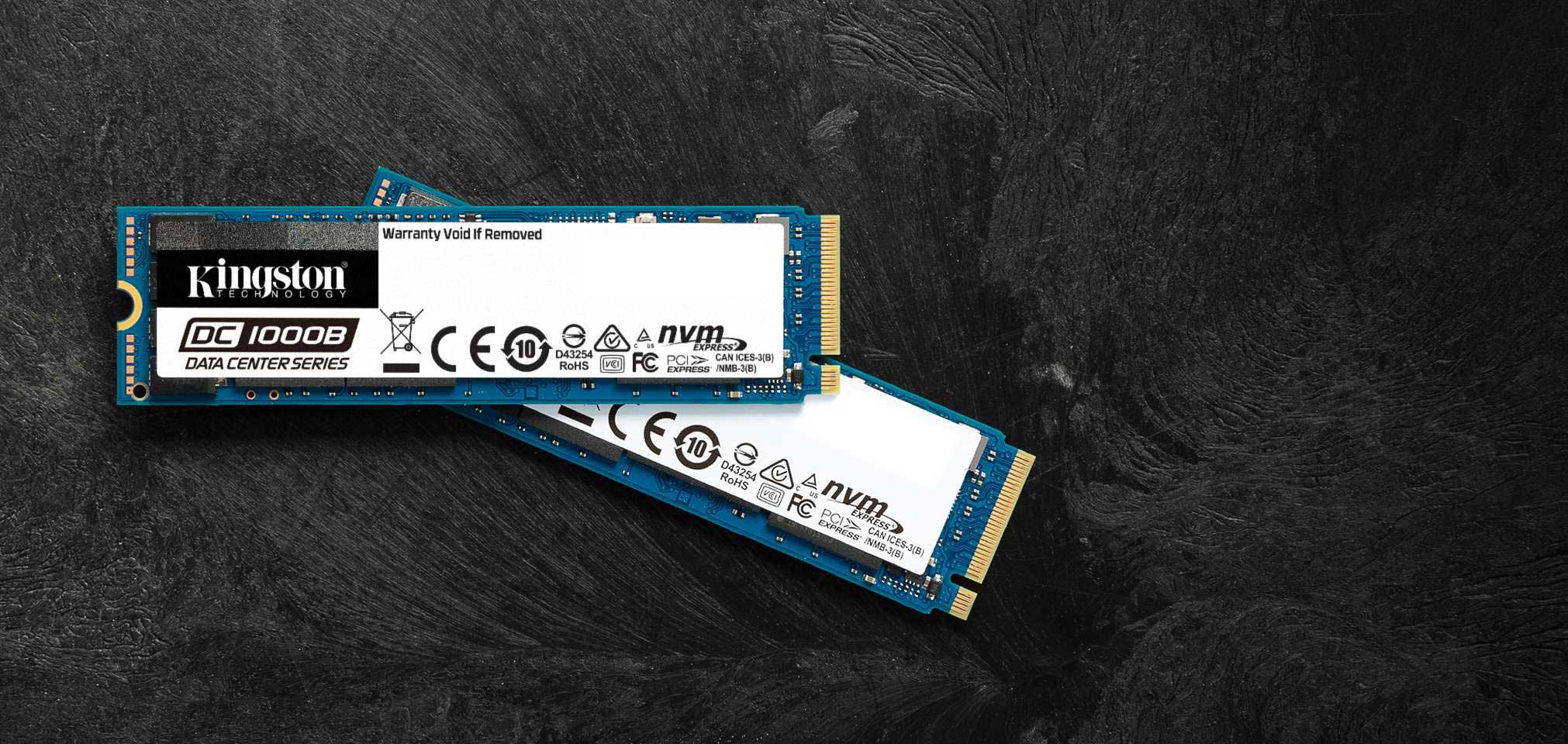
Kingston’s Data Center DC1000B is a high-performance M.2 (2280) NVMe PCIe SSD using the latest Gen 3.0 x 4 PCIe interface with 64-layer 3D TLC NAND. DC1000B offers data centers a cost-effective boot drive solution with the reassurance they are purchasing an SSD designed for server use. The DC1000B is ideally suited for use in high-volume rack-mount servers as an internal boot drive(s) as well as for use in purpose-built systems where a high-performance M.2 SSD is needed that includes on-board power loss protection (PLP).
Enterprise Data Center NVMe Boot SSD
M.2 NVMe SSDs are evolving within the data center providing efficiencies in booting servers to preserve valuable front-loading drive bays for data storage. Whitebox and Tier 1 Server OEMs are beginning to equip server motherboards with one or sometimes two M.2 sockets for boot purposes. While the M.2 form-factor was originally designed as a client SSD form-factor, its small physical size and high performance make it attractive for server use. Not all SSD are created equal and using a client SSD in a server application may result in poor inconsistent performance.
Applications
Boot drives are used primarily for booting an OS, but in many use cases today the boot drive has a secondary purpose; logging application data and/or configured as a high-speed local cache drive. Therefore, the DC1000B was designed with added endurance (0.5 DWPD for 5yrs) to handle the OS workload as well as the extra write workload of caching and data logging. In addition to being designed for long term reliability the DC1000B is designed to deliver enterprise level performance consistency and low latency features typically not found on client SSDs. Available in 240GB and 480GB capacities{{Footnote.N47164}}.

Planning the right solution requires an understanding of your project’s security goals. Let Kingston’s experts guide you.
Ask an Expert
Incredible speeds of up to 2.6GB/s and 200K IOPS.

Enhanced for boot workloads as well as caching and logging applications.

Reduce the possibility of data loss and/or corruption on ungraceful power-off.

Move boot drives internally frees up front loading drive bays for additional data storage.
| Form Factor | M.2, 22mm x 80mm (2280) |
| Interface | PCIe NVMe Gen3 x4 |
| Capacities{{Footnote.N47164}} | 240GB, 480GB |
| NAND | 3D TLC |
| Self-Encrypting Drive (SED) | AES 256-bit Encryption |
| Sequential Read/Write | 240GB – 2,200MBs/290MBs 480GB – 3,200MBs/565MBs |
| Steady-State 4k Read/Write{{Footnote.N47723}} | 240GB – 111,000/12,000 IOPS 480GB – 205,000/20,000 IOPS |
| Latency Read (Avg) | 161µs |
| Latency Write (Avg) | 75µs |
| Power Loss Protection (Power Caps) | Yes |
| SMART health monitoring and telemetry | SMART, Telemetry and other Enterprise Class Diagnostic capabilities |
| Endurance | 240GB — 248TBW (0.5 DWPD/5yrs){{Footnote.N63869}} 480GB — 475TBW (0.5 DWPD/5yrs){{Footnote.N63869}} |
| Power Consumption | 240GB: Idle: 1.82W Average Read: 1.71W Average Write: 3.16W Max Read: 1.81W Max Write: 3.56W 480GB: Idle: 1.90W Average Read: 1.74W Average Write: 4.88W Max Read: 1.81W Max Write: 5.47W |
| Storage temperature | -40°C ~ 85°C |
| Operating temperature | 0°C ~ 70°C |
| Dimensions | 80mm x 22mm x 3.8mm |
| Weight | 240GB – 8g 480GB – 9g |
| Vibration operating | 2.17G Peak (7–800Hz) |
| Vibration non-operating | 20G Peak (10–2000Hz) |
| MTBF | 2 million hours |
| Warranty/support{{Footnote.N48982}} | Limited 5-year warranty with free technical support |
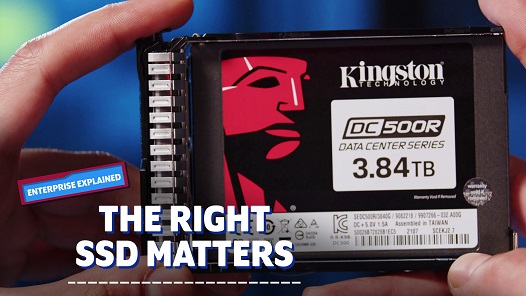
Choosing the right SSD is important since not all SSDs are alike. When it comes to data centers, choosing an SSD with the right performance consistency with low latencies that’s specifically built for enterprise and data center workloads is key for consistent and reliable performance.
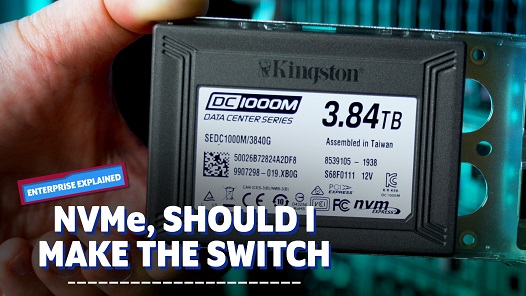
With the rise of data, need of edge computing and edge networks data center upgrades with NVMe SSDs enable more possibilities than before.
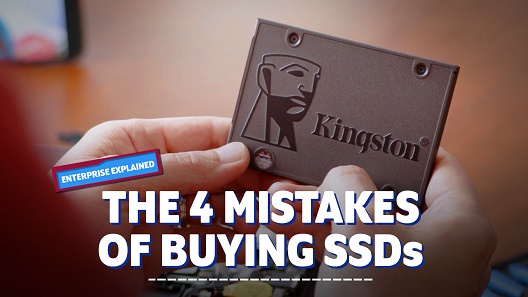
SSDs are all alike, right? You plug it in and instantly have all of that Flash Memory available for your workload? Right? If you answered yes, then you’ve probably fallen to one of the 4 biggest mistakes you could make when selecting your SSD.
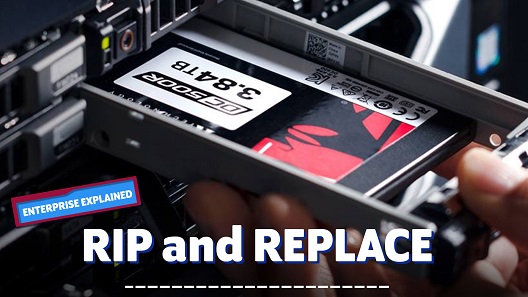
Some enterprises still make use of client SSDs to handle high-intensity server tasks, then rip & replace them when they fail to maintain the required standard of performance. Learn why that’s a false economy and how enterprise-level drives can increase organizational efficiency.